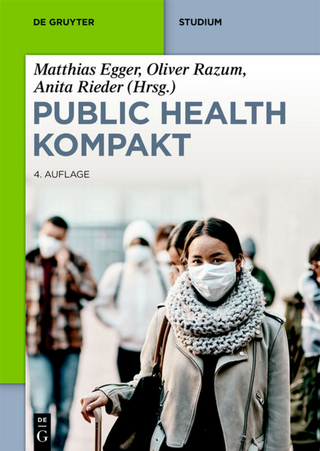
Screening for Breast Cancer
Oxford University Press (Verlag)
978-0-19-923733-3 (ISBN)
- Titel ist leider vergriffen;
keine Neuauflage - Artikel merken
Screening for common diseases is seen by some as a vital intervention in major health problems and by others as a costly exercise in public relations. Breast cancer incidence is increasing and screening programmes have been established in many countries. However, questions remain as to their efficacy, given the financial costs to health services, and the emotional and in some cases physical costs to well women who are screened. Screening for Breast Cancer begins by setting out the principles of effective screening programmes, and reviews variations in the incidence of breast cancer in different countries and age-groups to shed light on the major risk factors. This leads to a study of the normal and abnormal cell biology on which breast cancer diagnosis depends. The most common method of screening for early breast cancer worldwide is mammography using X-ray images. Screening for Breast Cancer is supported by a fully interactive DVD, developed in collaboration with a hospital breast screening service.The book and an interactive multimedia sequence explain the physical basis of X-rays, how and why they are used in mammography, and why the breast has to be compressed between two plates for a mammogram.
The mammography procedure, how the mammography machine works and how mammograms are interpreted, are explained in videos, concluding with a visit to the follow-up clinic and pathology laboratory where breast biopsy samples are processed and evaluated microscopically. Some other imaging methods that may become more important in the future are also introduced and the concepts of sensitivity and specificity are explained. The book closes by exploring the benefits, risks and costs of screening for breast cancer, so that the reader can weigh up the pros and cons, and see how the general principles might apply to other screening programmes. The Online Resource Centre features: For lecturers who are registered adopters of the book: Figures from the book in electronic - format, available to download For students: - Access to ROUTES, a searchable internet database of online resources compiled by academic staff and subject-specialist librarians.
Dr Elizabeth Parvin is a physics lecturer at the Open University, where she concentrates on developing teaching in medical physics at undergraduate and postgraduate level. Following a PhD in low temperature solid state physics at Cambridge University, Elizabeth was a lecturer at Coventry University, where she developed an interest in physics as applied to medicine, forging strong links with the Walsgrave Hospital. Elizabeth has produced various course materials for the Open University, including An Overview of X-ray Imaging and Fourier Imaging - A Short Introduction, both for an Open University Masters course.
1. Screening; 1.1 Types of screening tests; 1.2 Criteria for effective screening programmes; 1.3 Debates about the value of breats cancer screening; 1.4 Factors that affect uptake of breast screening; 2. What is breast cancer?; 2.1 Body structures; 2.2 The breast; 2.3 How do breast cells multiply?; 2.4 Gene Mutations; 2.5 Detecting breast cancers early; 3. Risk factors for breast cancer; 3.1 Multiple interacting causes; 3.2 Age and breast cancer; 3.3 Environmental risk factors; 3.4 Certain gene mutations can increase risk; 3.5 Oestrogen and breast cancer; 3.6 How large are the risks?; 3.7 Falling mortality rates; 4. Mammography; 4.1 What kind of test?; 4.2 X-ray imaging; 4.3 Other imaging methods; 5. Interpreting the mammograms; 5.1 What are radiologists looking for?; 5.2 The psychology fo image interpretation; 5.3 Measuring sensitivity and specificity; 6. Following up a positive test result; 6.1 Examining samples of breast tumours; 7. Benefits, risks and costs of screening; 7.1 Who gets screened?; 7.2 The benefits; 7.3 The risks; 7.4 Financial costs; 8. Conclusions
| Zusatzinfo | 60 full colour |
|---|---|
| Verlagsort | Oxford |
| Sprache | englisch |
| Gewicht | 484 g |
| Themenwelt | Medizin / Pharmazie ► Medizinische Fachgebiete ► Onkologie |
| Studium ► Querschnittsbereiche ► Epidemiologie / Med. Biometrie | |
| Studium ► Querschnittsbereiche ► Prävention / Gesundheitsförderung | |
| ISBN-10 | 0-19-923733-6 / 0199237336 |
| ISBN-13 | 978-0-19-923733-3 / 9780199237333 |
| Zustand | Neuware |
| Haben Sie eine Frage zum Produkt? |
aus dem Bereich


